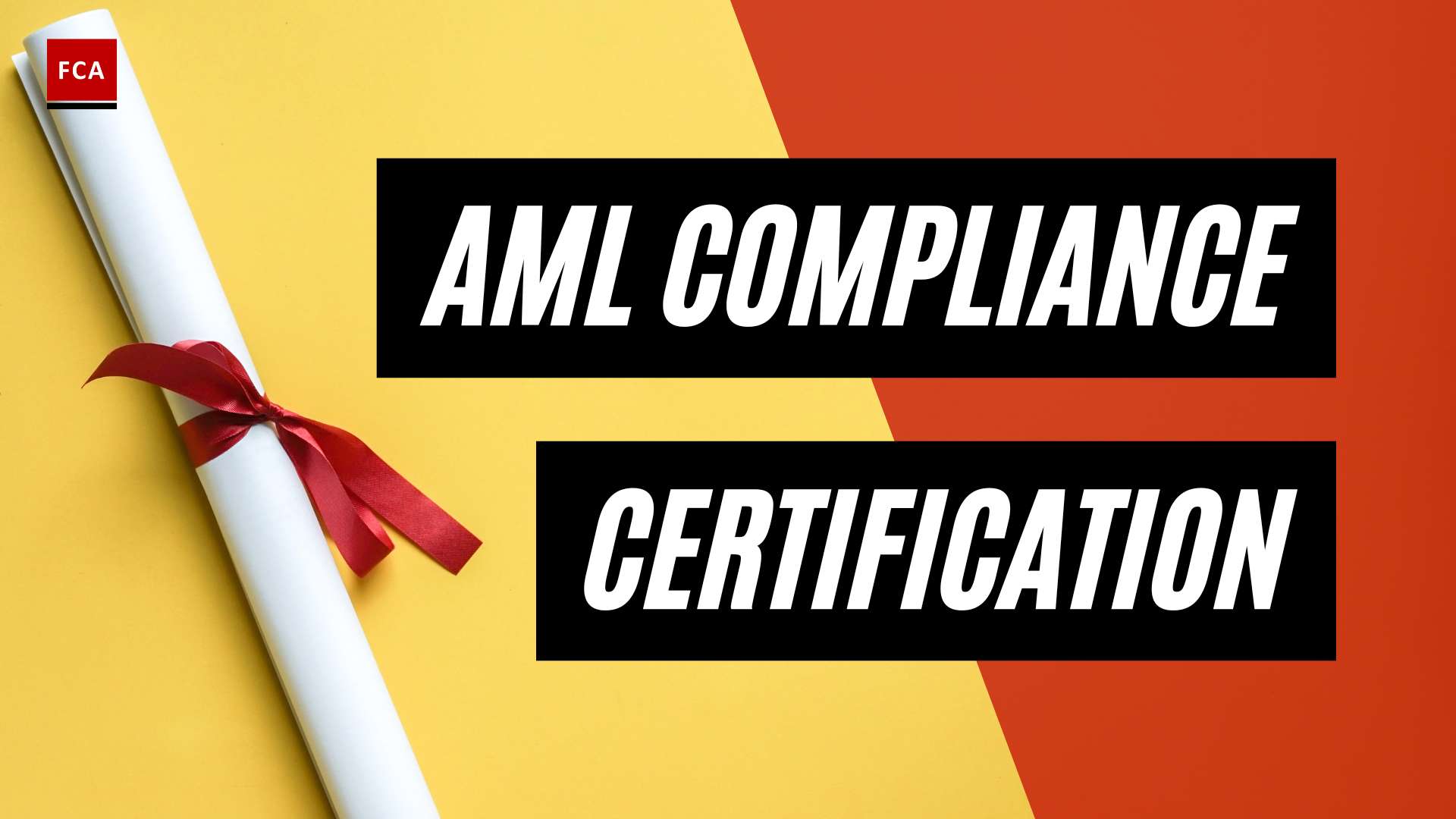Understanding AML in Insurance
In the insurance sector, Anti-Money Laundering (AML) regulations play a crucial role in preventing illicit financial activities and safeguarding the integrity of the industry. This section will provide an introduction to AML in insurance and highlight the importance of AML compliance within the sector.
Introduction to AML in Insurance
AML in insurance refers to the measures and procedures implemented by insurance companies to detect and prevent money laundering activities. Money laundering involves disguising the origins of illegally obtained funds and integrating them into legitimate financial systems. The insurance sector, with its vast financial resources and global reach, can be vulnerable to exploitation by money launderers seeking to legitimize their illicit proceeds.
To combat this threat, insurance companies are required to establish robust AML compliance programs that comply with relevant laws, regulations, and industry best practices. These programs aim to identify and mitigate the risks associated with money laundering and terrorist financing, ensuring the integrity of the insurance industry.
Importance of AML Compliance in the Insurance Sector
Maintaining AML compliance is of paramount importance for insurance companies. Failure to comply with AML regulations can result in severe consequences, including significant fines and reputational damage. Regulators across different countries, such as the UK and the US, have imposed fines ranging from $1.1 million to $140 million on insurance companies for non-compliance with AML regulations. These fines highlight the urgency and necessity for insurance companies to prioritize AML compliance.
Beyond regulatory penalties, AML compliance is crucial for protecting the insurance industry from being used as a channel for illicit financial activities. Insurance companies must be diligent in their efforts to identify and report suspicious transactions, mitigate the risk of money laundering, and contribute to the global fight against financial crimes.
By implementing effective AML compliance measures, insurance companies can not only protect themselves from regulatory scrutiny but also contribute to the overall stability and integrity of the financial system. Through thorough customer due diligence (CDD) and robust Know Your Customer (KYC) procedures, insurance companies can identify and mitigate the risks posed by money laundering activities and safeguard their operations.
In the upcoming sections, we will delve deeper into the specific AML risks faced by insurance companies in the underwriting process, the challenges they encounter in maintaining AML compliance, and strategies for enhancing AML compliance through technology and integration into the underwriting process.
AML Risks in Insurance Underwriting
Insurance underwriting, like any financial sector, is not immune to the risks associated with money laundering. Understanding the specific AML risks within insurance underwriting is essential for insurance companies to effectively combat financial crimes. Two key areas of concern are the prevalence of money laundering activities in the insurance sector and the regulatory fines and consequences that can result from non-compliance.
Money Laundering Activities in the Insurance Sector
A study conducted by the FBI found that 40% of all anti-money laundering (AML) investigations involved insurance companies, indicating the attractiveness of the insurance sector as a target for money launderers (RSM US). Criminals may exploit insurance policies to launder illicit funds, such as through fraudulent claims, premium overpayments, or the purchase of policies using illicit funds.
To mitigate these risks, insurance companies need to implement robust AML compliance measures. This includes thorough customer due diligence (CDD) and know your customer (KYC) procedures to identify and verify the identities of policyholders and beneficiaries. Additionally, implementing transaction monitoring systems can help identify suspicious activities and patterns that may indicate potential money laundering attempts.
Regulatory Fines and Consequences
The insurance sector has seen a rise in regulatory fines for non-compliance with AML regulations. These fines can range from significant amounts, such as $1.1 million to $140 million, as imposed by regulators in various countries. Non-compliance with AML regulations not only results in financial penalties but also poses reputational risks and potential legal consequences for insurance companies.
To avoid such penalties and safeguard their operations, insurance companies must prioritize AML compliance. This includes establishing robust AML policies and procedures, conducting regular risk assessments, and providing comprehensive AML training to employees and insurance agents. By staying abreast of evolving AML regulations and actively implementing necessary measures, insurance companies can protect themselves from potential fines and reputational damage.
By addressing the specific AML risks within insurance underwriting, insurance companies can enhance their AML compliance efforts and contribute to the overall fight against money laundering. It is essential to prioritize thorough customer due diligence, transaction monitoring, and employee training to effectively identify and prevent financial crimes within the insurance sector.
Key Challenges in AML Compliance for Insurance Companies
Ensuring effective Anti-Money Laundering (AML) compliance is a critical responsibility for insurance companies. However, they face several key challenges in this area, including inadequate Customer Due Diligence (CDD) and Know Your Customer (KYC) procedures, as well as the role of insurance agents in money laundering.
Inadequate Customer Due Diligence (CDD) and KYC Procedures
Inadequate CDD and KYC procedures have been identified as key weaknesses in the AML compliance of insurance companies. Regulators emphasize the importance of implementing effective CDD and KYC measures to mitigate the risks of money laundering and terrorist financing (Shufti Pro).
Insurance companies must verify the identity of their customers and assess the potential risks associated with their business relationships. This includes gathering accurate and up-to-date information about customers, such as their identity, source of funds, and purpose of the insurance policy. By conducting thorough CDD and KYC procedures, insurance companies can identify and assess the potential risks of money laundering and other financial crimes.
To enhance AML compliance in this area, insurance companies should implement robust risk assessment processes and employ advanced technologies to automate and streamline the CDD and KYC procedures. The use of sophisticated technologies, such as artificial intelligence (AI) and machine learning, can improve the efficiency and accuracy of identity verification and risk assessment, ensuring compliance with regulatory requirements.
Role of Insurance Agents in Money Laundering
According to a report from the Financial Action Task Force (FATF), insurance agents have been involved in money laundering activities by providing services to criminals and money launderers. This highlights the need for insurance companies to conduct thorough due diligence checks on their agents and customers to prevent illicit activities (Shufti Pro).
Insurance companies should implement comprehensive training programs to ensure that their agents understand and comply with AML regulations. AML training for insurance agents is essential to equip them with the knowledge and skills to detect and report suspicious activities. By promoting a culture of compliance and vigilance, insurance companies can mitigate the risks associated with the involvement of agents in money laundering.
Moreover, insurance companies should establish strong oversight and monitoring mechanisms to detect any unusual patterns of behavior or transactions by their agents. Regular audits and assessments can help identify potential red flags and ensure that agents are adhering to AML policies and procedures.
By addressing the challenges of inadequate CDD and KYC procedures and the role of insurance agents in money laundering, insurance companies can strengthen their AML compliance efforts and contribute to the overall fight against financial crimes.
Enhancing AML Compliance in Insurance
To strengthen anti-money laundering (AML) compliance in the insurance sector, insurance companies can utilize technology and integrate AML measures into the underwriting process. These approaches help in identifying suspicious activities, mitigating risks, and ensuring regulatory compliance.
Utilizing Technology for AML Compliance
Technology plays a critical role in enhancing AML compliance in the insurance industry. By leveraging sophisticated technologies such as artificial intelligence (AI) and machine learning, insurance companies can automate the detection of suspicious activities and transactions. These technologies enable the analysis of vast amounts of data to identify patterns and anomalies that may indicate potential money laundering activities. By automating these processes, insurance companies can improve their risk management practices and ensure compliance with AML regulations (Shufti Pro).
Cognitive computing is another technology that enhances AML risk assessments in the insurance sector. By leveraging cognitive computing capabilities, insurance companies can better understand user needs and make evidence-based determinations. This technology enables the evaluation of large datasets and connections, allowing for more accurate and sophisticated AML risk assessments. Cognitive computing also supports complex queries that were not feasible in the past, enhancing the effectiveness and efficiency of AML compliance efforts.
Graph analytics is a valuable technology for AML compliance in insurance. It focuses on exploring relationships between individuals and detecting patterns among various data types. By understanding relationships and making connections, graph analytics is effective in identifying anomalies and sharing customer attributes to enhance AML efforts. It aids in discerning significant relationship patterns with low false positive rates, making it a valuable tool for insurance companies in their AML compliance endeavors.
Integration of AML Measures in Underwriting Process
Integrating AML compliance measures into the insurance underwriting process is essential for identifying red flags and high-risk customers. By incorporating AML checks at the underwriting stage, insurance companies can prevent financial crimes and safeguard their operations from potential regulatory penalties. This integration ensures that AML compliance is an integral part of the insurance underwriting process, enabling the identification and assessment of AML risks from the early stages of the customer relationship (Shufti Pro).
By integrating AML measures into the underwriting process, insurance companies can assess customer risk profiles, perform enhanced due diligence, and identify any suspicious activities or inconsistencies. This proactive approach helps insurance companies comply with AML regulations and effectively combat money laundering activities within their operations. It also demonstrates a commitment to regulatory compliance and helps maintain the integrity of the insurance industry.
Incorporating technology-driven solutions, such as automated AML checks during the underwriting process, allows insurance companies to efficiently identify and manage AML risks. These checks can include verifying customer identities, conducting background checks, and analyzing transactional data to detect any potential money laundering activities. By integrating AML measures into the underwriting process, insurance companies can contribute to a safer and more secure insurance industry.
By utilizing technology and integrating AML measures into the underwriting process, insurance companies can enhance their AML compliance efforts. These approaches enable the identification of potential risks, the prevention of money laundering activities, and the maintenance of regulatory compliance within the insurance sector.
AML Requirements for Insurance Companies
To combat the risks of money laundering and protect the insurance industry from potential abuse by criminals and terrorists, insurance companies are required to establish anti-money laundering (AML) programs. These programs are in line with the establishment of AML programs for all financial institutions under the USA PATRIOT Act. In this section, we will provide an overview of AML programs for insurance companies, as well as the covered products and exemptions.
Overview of AML Programs for Insurance Companies
Insurance companies that issue or underwrite covered products are required to develop and implement a written AML program approved by senior management. These programs must be reasonably designed to prevent money laundering and comply with the applicable requirements of the Bank Secrecy Act (FinCEN). The key components of an AML program for insurance companies include:
-
Designated Compliance Officer: Each insurance company must designate a compliance officer responsible for overseeing the implementation and effectiveness of the AML program. The compliance officer serves as the primary point of contact for all AML-related matters.
-
Policies, Procedures, and Internal Controls: Insurance companies should establish comprehensive policies and procedures to address the specific AML risks they face. These policies and procedures should cover customer due diligence, ongoing monitoring, suspicious activity reporting, and recordkeeping. Internal controls should be implemented to ensure compliance with these policies and procedures.
-
Ongoing Training: Insurance companies must provide regular AML training to their employees, including agents and brokers. This training should ensure that employees are aware of their responsibilities and understand how to identify and report suspicious activities.
-
Independent Testing: Regular independent testing should be conducted to assess the effectiveness of the AML program. This testing can be performed internally or by an external party and should include a review of the company’s policies, procedures, and internal controls.
Covered Products and Exemptions
For the purpose of the final insurance company rule, covered products include permanent life insurance policies (excluding group life insurance), annuity contracts (excluding group annuity contracts), and any other insurance product with cash value or investment features. These products are considered to have a higher risk for money laundering.
However, certain insurance products are not considered “covered products” and pose a lower risk for money laundering. These include group insurance products, products offered by charitable organizations, term life insurance, property and casualty insurance, health insurance, title insurance, and reinsurance and retrocession contracts. Contracts of indemnity and structured settlements are also not covered (Source).
Insurance agents and brokers, while not required to have separate AML programs, are an integral part of the insurance industry and must be integrated into the insurance company’s AML program. The insurance company is responsible for monitoring their compliance and obtaining relevant customer-related information from agents and brokers.
By implementing robust AML programs and adhering to the requirements set forth by regulatory authorities, insurance companies can play a vital role in preventing money laundering activities within the insurance sector.
AML Compliance in Different Regulatory Jurisdictions
Anti-Money Laundering (AML) requirements for insurance companies vary across different regulatory jurisdictions. It’s important for insurance companies to be familiar with the AML regulations and obligations specific to the countries in which they operate. In this section, we will explore the AML requirements in the United States, the European Union (EU), the United Kingdom (UK), Singapore, and Australia.
AML Requirements in the United States
In the United States, insurance companies are required to establish AML programs under the Financial Crimes Enforcement Network (FinCEN) regulations. This regulation was introduced to protect the insurance industry from potential abuse by criminals and terrorists. It is in line with the USA PATRIOT Act, which mandates AML programs for all financial institutions. Insurance companies engaged in the issuing or underwriting of “covered products” are subject to these regulations. Covered products include permanent life insurance policies (excluding group life insurance), annuity contracts (excluding group annuity contracts), and other insurance products with cash value or investment features. These products have been identified as presenting a higher degree of risk for money laundering. Insurance agents and brokers are integral to the insurance industry and must be integrated into the insurance company’s AML program (source).
AML Regulations in the European Union
In the European Union, AML regulations for the insurance industry apply primarily to life and investment-related insurance. National regulators oversee the implementation of AML regulations in line with EU standards. The European Insurance and Occupational Pensions Authority (EIOPA) provides guidance and oversees the insurance industry’s compliance with AML requirements. The EU is proposing reforms that focus on extending obligations to non-life insurance products. However, at present, these obligations are exclusive to life and investment-related insurance.
AML Compliance in the United Kingdom
In the United Kingdom, insurers are subject to AML and Countering the Financing of Terrorism (CFT) regulations. The Senior Management Arrangements, Systems, and Controls (SYSC) framework, Proceeds of Crime Act (POCA) 2002, and the Sanctions and Money Laundering Act (SAMLA) 2018 provide the regulatory framework for AML compliance in the insurance sector. All insurers, including life and general insurance providers, must comply with these regulations to ensure effective AML and CFT measures are in place.
AML Obligations in Singapore
In Singapore, AML and CFT requirements for insurance companies are overseen by the Monetary Authority of Singapore (MAS). MAS regulates the insurance sector and encourages the use of regtech, machine learning, and advanced techniques for AML/CFT compliance. Notice 314 issued by MAS applies specifically to life insurers, outlining the AML requirements they must fulfill. MAS also emphasizes the use of national digital ID systems for Customer Due Diligence (CDD) (source).
AML/CFT Framework in Australia
In Australia, insurers are subject to the Bank Secrecy Act (BSA), which requires financial institutions, including insurance companies, to establish AML and CFT programs. The Australian Transaction Reports and Analysis Centre (AUSTRAC) oversees the AML/CFT framework in the country. Insurance companies must comply with the AML/CFT obligations outlined in the BSA, file suspicious activity reports (SARs), and ensure that all SARs are filed through the regulator’s e-filing portal.
Understanding the specific AML requirements in each regulatory jurisdiction is crucial for insurance companies to develop and maintain effective AML compliance programs. Compliance with these regulations helps protect the insurance industry from money laundering risks and ensures the integrity of the financial system.








